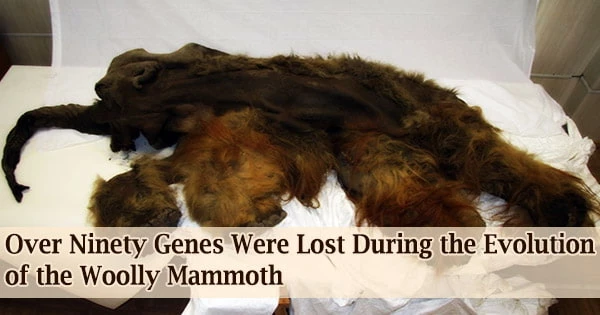According to a recent study, 87 genes were impacted by deletions or brief insertions throughout the evolution of the mammoth. The scientists point out that the results have ramifications for global initiatives to bring back extinct animals, such as the woolly mammoth.
Researchers from the Centre for Palaeogenetics in Stockholm, a partnership between Stockholm University and the Swedish Museum of Natural History, published the work today in the journal iScience.
Using genome editing tools like Crispr-Cas9 to insert important gene variations from an extinct species into the genome of a living relative is one of the strategies for reviving extinct species that has received the most attention.
The findings of this new study suggest that in order to preserve crucial biological features while recreating extinct genomes, some genes would also need to be removed.
“Editing the genome of a living species to mimic that from an extinct relative was never going to be easy, and these new findings certainly illustrate the complexity and difficulties that lie ahead,” says Love Dalén, a professor of evolutionary genomics at the Centre for Palaeogenetics.
Two new Siberian mammoth genomes from the last ice age have been sequenced by the study’s authors, who then compared them to 33 previously reported mammoth, Asian elephant, and African elephant genomes.
However, we did also find 84 genes that have been affected by genomic deletions and three that have been affected by short insertions. These structural changes likely had a significant impact on the function of these genes and might have contributed to some of the unique adaptations of the woolly mammoth.
Tom van der Valk
The function of a gene will be impacted by a gene deletion. Similar to long insertions, small insertions can cause genes to become unreadable due to frame-shift mutations. The analysis reveals that the mammoth’s genome, which has more than three million letters in the genetic code, has hundreds of little insertions and deletions.
The majority of them, the researchers discovered, did not occur within genes, which suggests they have generally had a detrimental effect on mammoth viability.
“However, we did also find 84 genes that have been affected by genomic deletions and three that have been affected by short insertions. These structural changes likely had a significant impact on the function of these genes and might have contributed to some of the unique adaptations of the woolly mammoth.,” says Tom van der Valk, a researcher at the Centre for Palaeogenetics.
It’s possible that the altered functionality of these 87 genes played a significant role in mammoths’ ability to adapt to the harsh conditions of the far north. Many adaptive characteristics, including body size and cold tolerance, are controlled by a variety of genes.
Therefore, the functional pathways that influence the development of these adaptive traits may be impacted by the loss of some of these genes.
“Several of the genes that have been affected are related to classic woolly mammoth traits such as fur growth and hair shape, fat deposition, as well as skeletal morphology and ear shape,” says Marianne Dehasque, a PhD student on mammoth genomics at the Centre for Palaeogenetics.





